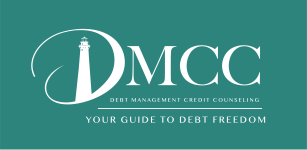Is your lunch hour becoming too expensive? Learn 7 easy ways to cut the cost of your lunch hour.
1) Stock foods that can be taken for work
Grocery shop once a week, and make sure to buy plenty of things that you can bring to work. Choose a grocery store that carries foods that work well for your lunches. Make sure to have lettuce or bagged salads at all times during the week. Fruits and vegetables are definitely important too, such as carrot sticks, bananas, and apples. If you like soups, check out the frozen selections.
2) Cook enough each night to provide leftovers for the next day
Try to typically cook dinners consisting of fresh vegetables and make sure to cook enough to take to work for the next day or two. Often you can often add other meal components that are easy to cook in bulk, such as rice or pasta, to complete a leftover. Certain meals are good for leftovers, like soups and chili. All of these are easily reheated at work.
3) Keep (healthy) food at work
Aside from what you bring to work each day, keep food at your desk just in case. Keep nuts, granola bars, and crackers, these desk foods are somewhat healthy since don’t encourage high-calorie snacking.
4) Don’t keep menus or let people talk you into lunch
Don’t keep menus or other temptations around the office. Out of sight out of mind. If others are going out to lunch, politely decline.
A lot of lunch options out there are things that you could make yourself. If you’re going to go out and buy a ham and cheese sub, make it yourself instead for a fraction of the cost. Salads are super easy to make, especially with pre-mixed bags of lettuce and a wide variety of toppings available.
6) Find other productive things to do during your lunch break
Rather than spend all of the time it takes to order food, go out and get it, bring it back, and then eat it, settle for the lunch you have in the office fridge that you brought to work. You could heat it up and eat within 15 minutes or so. That leaves another 45 minutes to do what you choose. You can read books or blogs, or pay bills and do other tasks that you would need to do at home anyway.
7) Consider the trade-offs
Don’t think that you’re simply skipping lunch to deprive yourself of “the good life.” It’s more that you would prefer to spend your money in other places, even if it’s still on food. You would much rather eat out for dinner than buy a sub or pizza for lunch every day. A well-prepared and exciting dinner, like Ethiopian food, might be rather enjoyable.
One of the main reasons people do eat out for lunch is that they don’t want to take the time to make lunch every day. This is a poor excuse. Most alternatives don’t take much time to prepare, and packing leftovers takes virtually none.
If you must eat out for lunch, definitely set limits. Once a week is plenty. Consider cutting down on this number gradually while getting used to making lunches for yourself. It really isn’t that bad, and it’s an easy step to padding your wallet.

